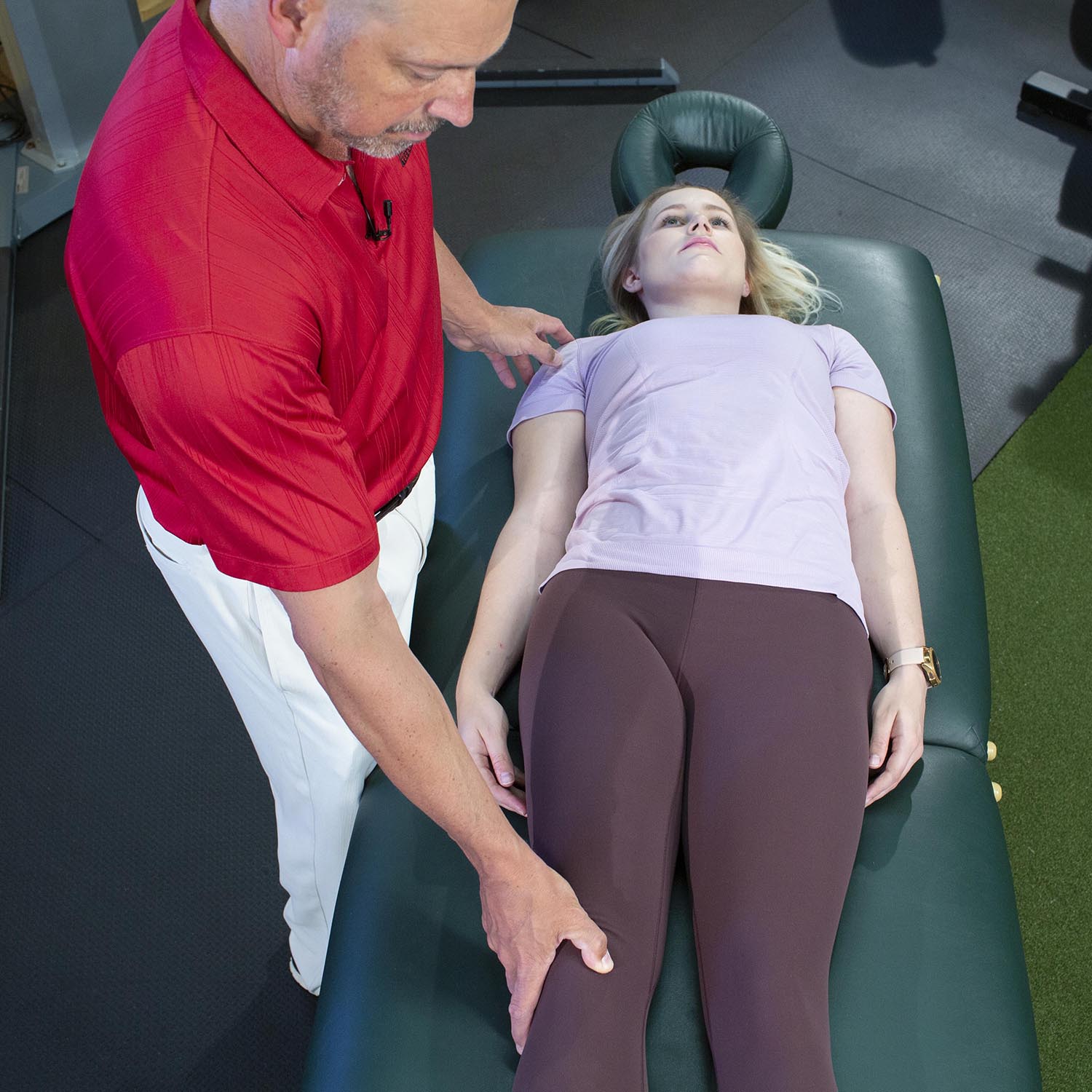What Is An MAT Therapist?
Learn more about our certified professionals
An MAT certified therapist sets the focus of care on neuro muscular issues.
Stress, trauma, and overuse and the resultant inflammation can alter the communication between the nervous system and the muscle system. This altered communication is what creates neurological weaknesses. In these situations, muscles lose their ability to contract efficiently, where they can no longer contract on demand, in order to stabilize joints and protect the body from injury. From an MAT perspective we would consider these muscles to be “inhibited”.
The goal of MAT is to “activate” the inhibited muscles through muscle specific isometric contractions or manual stimulation at the origin and insertion of the associated muscle(s).
MAT Therapist Levels Explained
Practitioner Levels
Certification Levels
There are 3 practitoner levels within our Certified MAT Therapist ranks with a total of 11 certifications that can be obtained. As an MAT Therapist continues their education they will advance from the Specialist level, into the Mastery level, and then our elite MATRx level.
What does a professional MAT certified therapist look like?
The goal of MAT is to “activate” the inhibited muscles through muscle specific isometric contractions or manual stimulation at the origin and insertion of the associated muscle(s).
Stress, trauma, and overuse and the resultant inflammation can alter the communication between the nervous system and the muscle system. This altered communication is what creates neurological weaknesses. In these situations, muscles lose their ability to contract efficiently, where they can no.
You'll Need Someone To Put You Back Together

Frequently Asked Questions
What is MAT?
MAT was founded on the principle that human movement and exercise are fundamental to human health and that a muscle’s ability to contract efficiently is important for normal movement. Any loss of muscle contraction efficiency may be demonstrated as a loss of motion and decreased physical performance, which may lead to pain and/or the loss of physical capabilities.
MAT® is a specific and unique process for evaluating an individual’s ability to develop efficient muscle contraction(s) by first comparing left and right side range of motion, as the human body is designed to be symmetrical.
If a movement is determined to be asymmetrical (i.e. one limb has a greater range of motion than then opposite limb) as determined by the Comparative Assessment of Mobility or CAM, then we know that one or more muscles that moves the less mobile limb is potentially weak. The muscles that are responsible for moving the limb further are then assessed by the MAT® Specialist to determine if they have lost the ability to contract efficiently.
When it has been determined through testing that a muscle has lost its ability to contract, then precise forces are applied to restore that muscle’s efficiency, re-activating that muscle. As muscles are restored to efficient contraction, MAT® uses a system of accountability (checks and balances) to ensure that any increases in motion and symmetry are accompanied by improvements in a muscle’s contractile ability.
Is MAT a form of exercise?
Actually yes! MAT is a precise and focused exercise process that can be used as an adjunct to any number of other exercise processes. MAT can help an individual prepare for exercise, help someone sustain an exercise program and support rehabilitation for certain conditions when deemed appropriate by medical providers.
What makes MAT unique?
MAT does not force change on the body but instead works with it to make improvements, causing changes in motion via improvements in muscle contraction. An MAT specialist listens to your body’s responses and changes their treatment decisions based on these responses. Each client is treated as an individual with their own muscular weaknesses and compensation patterns. Therefore, no treatment session is ever the same.
MAT does not diagnose or treat pathology, but works to improve a muscle’s contractile capabilities and the resulting range of motion and strength of that muscle/limb. By improving these aspects, a person will see an increased ability for exercise and physical performance.
MAT differentiates itself from other techniques because it never attempts to directly lengthen or change the muscle by stretching, heating, kneading, or foam rolling. MAT is not trying to “relax” muscle, but instead tries to “activate” the muscle, so that your body is better prepared to handle the forces that come from exercise and every day movements.
How do I know if I have a muscle that is weak?
The first and major indication is that something may not feel right. This can be seen as joint pain, muscle tension or instability of a joint, or in other words tight hamstrings, tight lower back, shin splints, aching knees, or a hyper-extended joint. Any feelings of pain or tightness can be signs of possible muscle weakness.
Can MAT have a positive impact on arthritis and the aging process?
Yes! MAT is an exercise-based process and research on exercise and its ability to improve health is well established. It is acknowledged that muscles are designed to stabilize the joints, so any improvement in muscle function may prevent the loss of physical performance often associated with arthritis and aging.
Many times a loss in muscle mass, or sarcopenia, is seen with aging. Because MAT ensures that each muscle is receiving a signal to contract, when you exercise with load, your body will now have the ability to maintain or gain muscle mass, thus reducing or eliminating sarcopenia. This can also reduce joint stresses that lead to, or exacerbate, arthritic conditions.
If I am an athlete, will MAT help improve my performance and keep me healthy?
MAT is a technique that helps athletes recover from competitive stress quickly and help them prevent future injuries. MAT prepares the body to be more efficient in training and athletic performance. In order to reach optimal performance capabilities, an athlete is forced to train at high intensity levels. Because of this, there is always the risk for injury. Some athletes may be predisposed to an injury, due to muscular contraction inefficiencies that place increased stress on joints and tissues. When training at a high level, these inefficiencies are magnified, and sometimes the body can no longer handle the stress, eventually breaking down. It is like driving a car with bad alignment. The faster you drive it, the faster the tires are going to wear out. The body functions in much the same way.
The goal of MAT is to address the weakness before an injury occurs. Conventional therapy will typically treat the symptom, but the cause of the problem is typically left unaddressed. The end result is that the athlete does not heal, or they go on to experience repetitive injuries, or a more severe injury. MAT not only helps to prevent injuries, but it can also assist a rehabilitation process. By balancing the muscular system, MAT® provides an improved environment for restoring physical performance. This allows the athlete to return to sport sooner with improved athletic capabilities.
What about strength training, stretching, or even yoga – can’t these correct weakened muscles?
The answer is – maybe. If you have muscles that have been weakened due to prolonged stress or sudden trauma, then moving them into a position of vulnerability (contraction) may result in other muscles taking over or compensating. This leads to the weak muscles staying weak and the strong muscles getting stronger. This can lead to joint deterioration and chronic problems like tendonitis and arthritis due to imbalanced forces acting on the joint. The best course of action is to properly assess which specific motions are limited and which muscles are weakened and then to take a course of action to improve your muscle function.
MAT can tell you which muscles are weak, and then give you the tools to improve these weaknesses, so that you can get back to participating in the sports/activities that you enjoy from a position of strength.
How do I determine for myself which muscles are creating the tightness, discomfort or loss of physical performance in my body?
We recommend that you visit a qualified MAT Specialist and have him or her do a thorough assessment. A MAT Specialist is highly skilled and trained with over 300 individual muscle tests to determine not only which muscles may be weakened, but also which specific fibers of these muscles needs activation. Check out our Find A Practitioner page to locate a certified Specialist near you.
